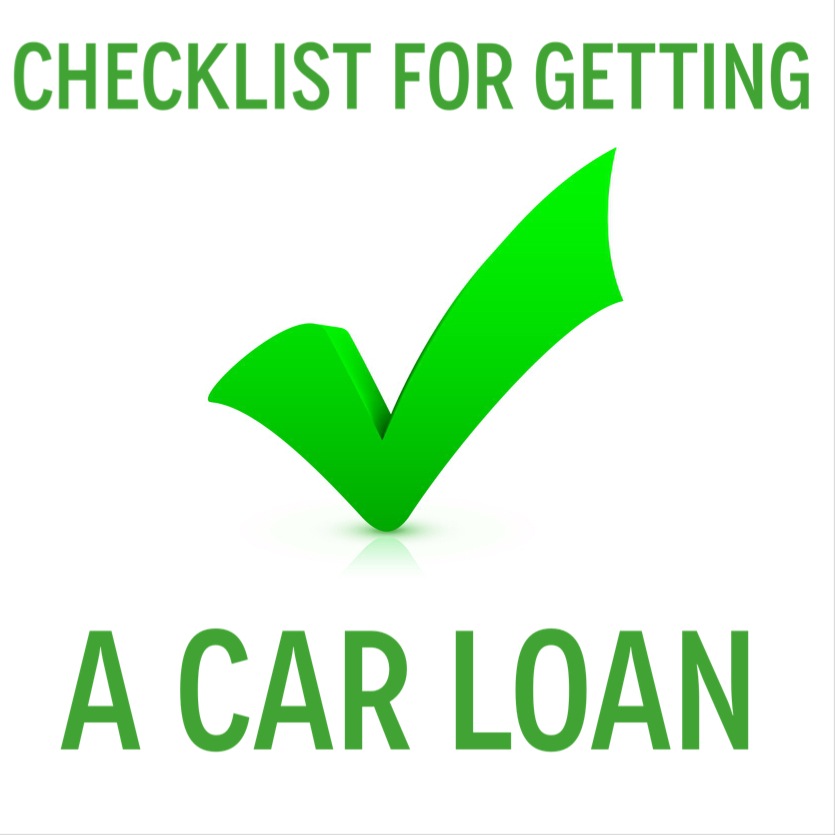
Checklist for Getting a Car Loan

Knowing how to find the right car loan for you can help you get the car that you want without financial headaches.
Contents:
Prepare your credit
Get Pre-qualified and then pre-approved by lenders
Decide if you want GAP insurance
Compare rebate value to lower interest rates
Avoid “yo-yo financing” scams
Beware offers to pay off your pre-existing car loan
Know the value of your trade-in
Ask the dealer to show prices for the car, financing, trade-in and add-ons
separately
Prepare your credit
Your credit rating will have direct impact on what rates you pay for a car loan. There are four important steps to improve your credit rating. Take these steps a few months before you want to apply for a car loan.
- Get a free copy of your credit report by visiting www.AnnualCreditReport.com.
- Check your credit report for any errors such as debts that you do not actually owe or that you have already paid. Errors on your credit report can cause you to pay more for a car loan.
- Fix any errors on your credit report by following the Federal Trade Commission’s steps: document your evidence of the error (such as receipts or bank records showing you paid a debt); write a letter to your lender that itemizes the errors in your report and includes copies of your evidence; in your letter ask the lender to correct the error; send the letter to both the credit bureau from which you got your free credit report and to the lender; send this letter by certified mail and keep the receipt.
- Pay down your credit card balances so that you are using less than 30 percent of your credit limit on any card.
Get pre-qualified and then pre-approved by lenders
Before you enter a dealership, get “pre-approved” for a car loan. This will allow you to have leverage when negotiating with the dealer instead of taking what loan they offer you at the time. A dealer might still have a better offer on a loan than your pre-approved rate but you’re more likely to get a better offer from a dealer if you are pre-approved.
However, before you get pre-approved, first get “pre-qualified.” Here’s why: when you apply for pre-approval, the lender pulls your credit. Do this often enough, and this process can hurt your credit rating. Pre-qualification is a better first step that gives you information you need to shop around for a loan and find the right loan for you without hurting your credit.
Here are the steps to take to get pre-qualified and then pre-approved:
- Have Car Insurance: in order to qualify for car loans you will need to show that you are insured to drive a car you might buy.
- Prepare income and employment verification: be ready to present the lender with information such as pay stubs running back for at least three months, W-2 forms from your most recent employers over the course of the past 2 years, your latest tax return and your bank account statements from the past three months.
- Prepare information about the car you want to buy: The more information about what kind of car you provide to the lenders where you apply, the more accurate your pre-approval will be.
- Research Average Loan Rates in your Area: You can find average rates for car loans in your area at Bankrate.com
- Check your rate at a credit union by asking for “pre-qualification”: If you are a member of a local credit union, that credit union may be a good option. According to Bankrate, Credit Unions have lower auto loan rates on average compared with banks. Bring the employment and income verification documents that you prepared as mentioned above and ask what level of loan and what rate at which you are “pre-qualified.”
- Check your rate at a local bank by asking for “pre-qualification”: If you already deal with a bank in your neighborhood, check to see what rate you will get there. As with a credit union, you can see an estimate of what rate you would receive for your car loan without formally applying if you bring your employment and income documents to the bank through “pre-qualification.”
- Compare these rates once you’ve checked at least three lenders: you can compare the offers from different lenders using a calculator from Consumer Reports.
- Apply: Once you’ve found a lender with the best rate for you, apply for pre-approval with that lender.
Decide if you want GAP Insurance
Check with your car insurance company to see what it will cost to add GAP coverage to your current policy before you buy coverage from a dealer.
GAP insurance (Guaranteed Auto Protection or Guaranteed Asset Protection) covers the difference between the what a car is worth and what you may owe on a car when it is totaled, potentially making up the difference between the maximum you car insurance will pay for and what you may owe. If you have paid a small percentage of your car’s cost as a down payment and can only afford a longer loan, you may consider GAP insurance. Often it is not necessary if you can afford a shorter loan.
Compare a rebate value to lower interest rates
If a dealer offers you a choice between a rebate or a lower interest rate on a loan, compare the two options using Consumer Reports’ calculator
Avoid “yo-yo financing” scams
If your dealership tells you your loan with them has been “conditionally financed”, beware as this may be a scam. Do not drive a car home until your financing is approved.
If you get a loan from a dealership to buy a car, that sale will be conditional on your loan being approved. Sometimes, dealerships will notify you that your loan has not been approved many days after you have taken the car home and that you need to return the car or agree to a higher interest rate as well as potentially having to pay fees for the use and wear of the car, a process known as “yo-yo financing.”
Beware offers to pay off your existing car loan
If a dealer offers to pay off your existing car loan, check the new loan they offer you to compare that rate and terms to their previous offer or to your pre-approved loan rate.
Sometimes dealerships will offer to pay off a previous car loan you may have but then will increase the rates on the loan they are offering you to make up the cost of the loan or even add costs on top of the previous loan. Use Consumer Reports’ calculator for trade-ins and loan rates to compare offers.
Know the value of your trade-in
Know the Kelly Blue Book value of any car you are trading-in so that you get the full value from the dealership.
Ask the dealer to show prices for the car, financing, trade-in and add-ons separately.
Sometimes dealers will combine the cost of the car you are buying, the cost of the loan they are selling, the value of any car you are trading in and the cost of add-on services into one price. This makes it hard to know if you have gotten full value for your trade-in or whether the dealer is offering you the best loan deal compared to other lenders. Listing the price of the loan on an offer from a dealership lets you compare the dealership’s offer with the lenders you consulted to get pre-approved.
Topics
Find Out More


Trouble in Toyland 2023

VR risks for kids and teens

